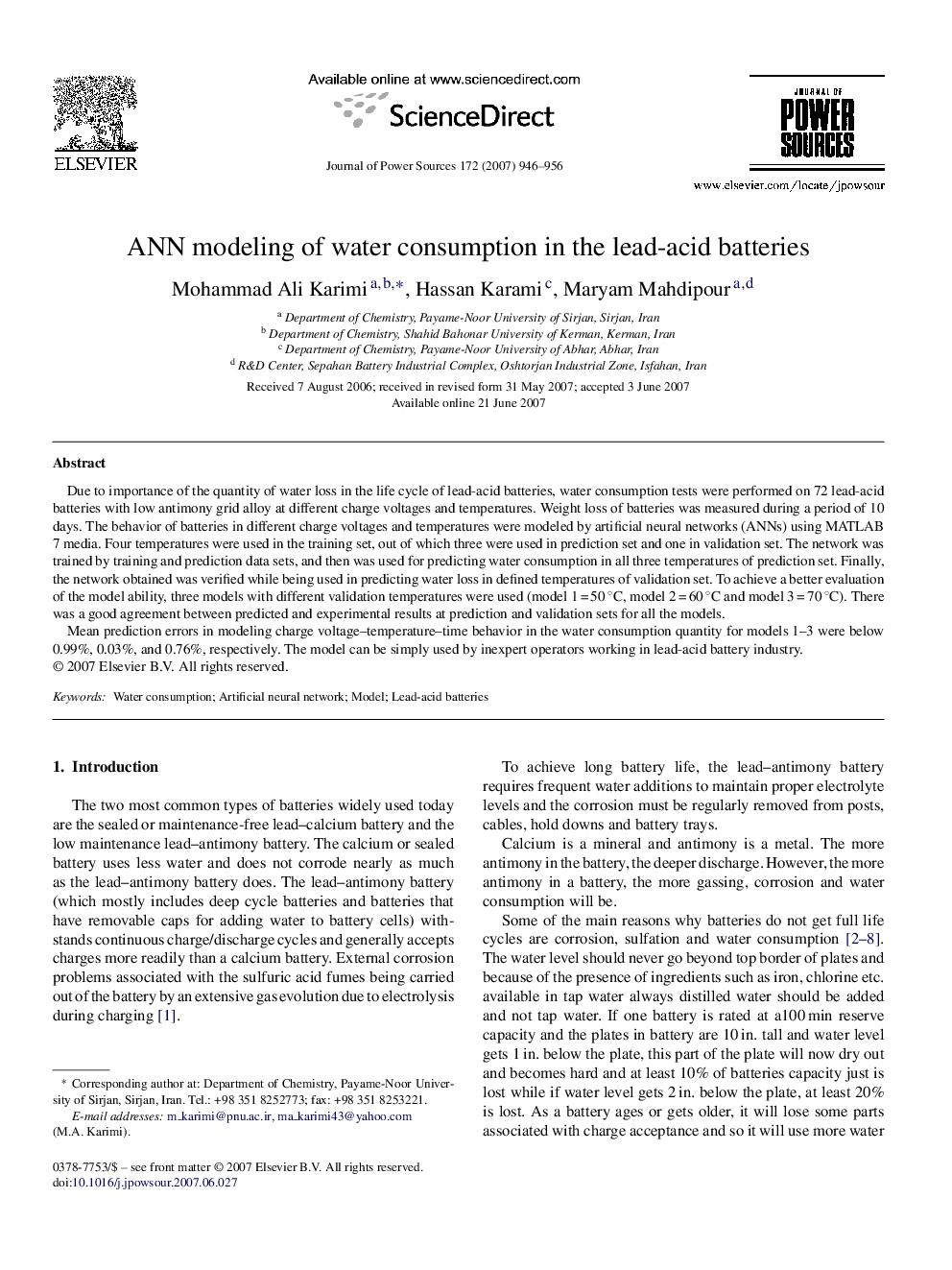| Article ID | Journal | Published Year | Pages | File Type |
|---|---|---|---|---|
| 1286222 | Journal of Power Sources | 2007 | 11 Pages |
Due to importance of the quantity of water loss in the life cycle of lead-acid batteries, water consumption tests were performed on 72 lead-acid batteries with low antimony grid alloy at different charge voltages and temperatures. Weight loss of batteries was measured during a period of 10 days. The behavior of batteries in different charge voltages and temperatures were modeled by artificial neural networks (ANNs) using MATLAB 7 media. Four temperatures were used in the training set, out of which three were used in prediction set and one in validation set. The network was trained by training and prediction data sets, and then was used for predicting water consumption in all three temperatures of prediction set. Finally, the network obtained was verified while being used in predicting water loss in defined temperatures of validation set. To achieve a better evaluation of the model ability, three models with different validation temperatures were used (model 1 = 50 °C, model 2 = 60 °C and model 3 = 70 °C). There was a good agreement between predicted and experimental results at prediction and validation sets for all the models.Mean prediction errors in modeling charge voltage–temperature–time behavior in the water consumption quantity for models 1–3 were below 0.99%, 0.03%, and 0.76%, respectively. The model can be simply used by inexpert operators working in lead-acid battery industry.
